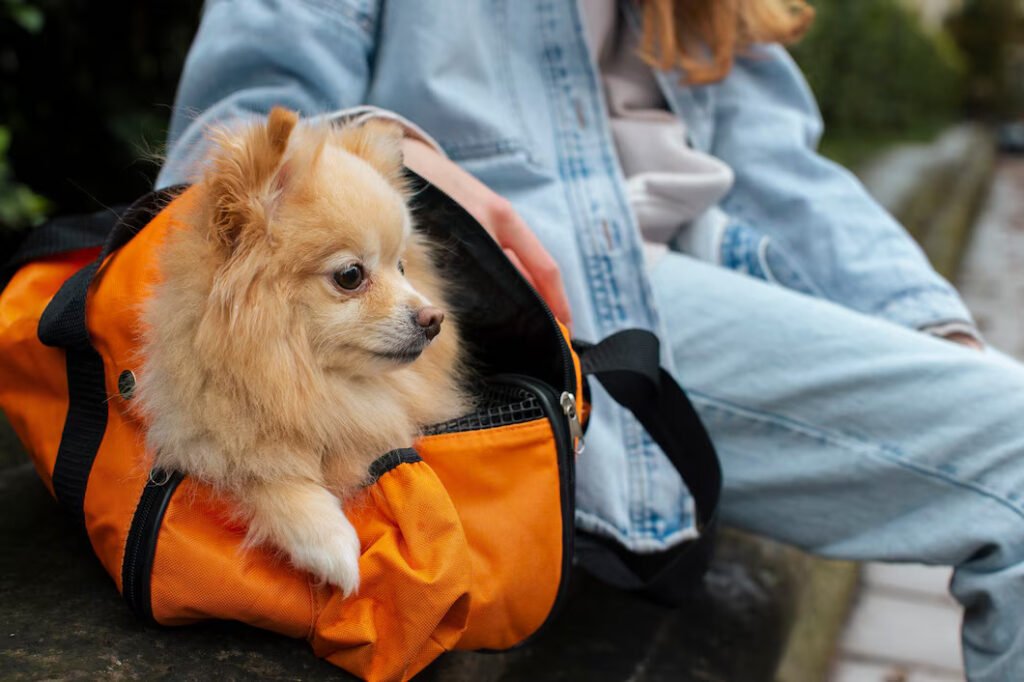
Travelling with pets can feel like navigating a maze, especially when your destination is as enchanting yet distant as the Canary Islands. For UK pet owners dreaming of sun-soaked holidays with their furry companions, finding pet-friendly airlines flying to the Canary Islands is a top priority. The Canary Islands, a Spanish archipelago off the coast of northwestern Africa, are a popular getaway spot, boasting stunning beaches, volcanic landscapes, and a welcoming climate year-round. However, UK regulations and airline policies add layers of complexity to pet travel, particularly since pets cannot fly in the cabin on routes into or out of the UK. This article delves deep into the world of pet-friendly airlines, offering a detailed guide to help you plan a seamless journey to Gran Canaria, Tenerife, or Lanzarote with your beloved dog or cat. From understanding EU pet travel rules to identifying airlines that accommodate pets in the hold, we’ve got you covered with practical advice and insights. For more on the Canary Islands’ appeal, check out Visit Gran Canaria.
Understanding UK and EU Pet Travel Regulations
Before booking a flight, it’s crucial to grasp the regulations governing pet travel between the UK and the Canary Islands, which, as part of Spain, adhere to EU standards. Since Brexit, pet passports issued in Great Britain are no longer valid for EU travel. Instead, you’ll need an Animal Health Certificate (AHC), obtainable from a vet, confirming your pet’s microchip, rabies vaccination (at least 21 days prior), and overall health. The Canary Islands don’t impose quarantine if these requirements are met, but the UK’s strict rabies-free status means pets returning must comply with additional rules, including a rabies blood test if travelling back after an extended stay. Airlines also have their own policies, often requiring pets to travel in the cargo hold rather than the cabin on UK routes. This can be daunting, but modern cargo holds are pressurised, temperature-controlled, and designed for pet safety. For a full breakdown of UK pet travel rules, visit GOV.UK.
Why Choose the Canary Islands for a Pet-Friendly Holiday?
The Canary Islands aren’t just a paradise for humans; they’re increasingly pet-friendly too. With over 30 pet-friendly accommodations in Gran Canaria alone, plus pet parks at airports like Gran Canaria Airport, the islands cater to four-legged visitors. Imagine strolling along Tenerife’s pet-friendly beaches or exploring Lanzarote’s volcanic trails with your dog by your side. However, local rules apply—pets must be leashed in public spaces, and some areas restrict access, so always check signage. The islands’ mild climate, averaging 23°C in summer and 15°C in winter, is ideal for pets, avoiding the stress of extreme heat. Airlines facilitating pet travel to this destination are thus in high demand, as more UK owners seek to include their pets in holiday plans. For pet-friendly accommodation options, explore Booking.com.
British Airways: A Reliable Option for Pet-Friendly Travel
British Airways stands out as a leading choice among pet-friendly airlines flying to the Canary Islands from the UK. While pets can’t travel in the cabin on BA flights, the airline partners with PetAir UK, a vet-run service ensuring safe cargo hold transport. BA flies to Tenerife South (TFS), Gran Canaria (LPA), and Lanzarote (ACE) from London Heathrow and Gatwick, with flight times averaging 4.5 hours. Costs vary depending on pet size and crate, often reaching several hundred pounds, but the service prioritises welfare with temperature-controlled holds and dimmed lighting. Booking requires at least 72 hours’ notice via IAG Cargo, BA’s sister company handling pet logistics. Assistance dogs, however, travel free in the cabin. For detailed pet policies, see British Airways.
Iberia: Connecting the UK to the Canary Islands with Pets
Iberia, Spain’s flag carrier, offers another viable route for pet-friendly travel from the UK to the Canary Islands, often via Madrid. While Iberia allows small pets (up to 8kg, including carrier) in the cabin on many European routes, UK flights restrict pets to the hold due to national regulations. From London Heathrow, you can connect to Gran Canaria or Tenerife, with pet fees starting at €60 for intra-Spain legs and rising for international segments. Iberia enforces strict crate size limits (max 45kg including pet) and bans certain breeds like brachycephalic dogs in the hold due to health risks. Booking must be made 48 hours in advance, and transit times between flights should be 90 minutes to 4 hours. For a smooth experience, consult Iberia.
TUI Airways: A Budget-Friendly Pet Travel Choice
TUI Airways, a popular UK charter airline, flies to all major Canary Islands airports—Gran Canaria, Tenerife South, Lanzarote, and Fuerteventura—making it a budget-friendly option for pet owners. Like BA, TUI doesn’t allow pets in the cabin, but they can travel as manifest cargo in the hold. Costs are competitive, though exact pricing depends on your pet’s weight and destination, and you’ll need to arrange this through TUI’s cargo service in advance. Flights depart from multiple UK airports, including Manchester and Birmingham, with durations around 4 to 4.5 hours. TUI’s extensive network and holiday packages often include pet-friendly hotel options, enhancing its appeal. For more details, visit TUI Airways.
Loganair: A Regional Pet-Friendly Alternative
For those in Scotland or northern England, Loganair offers a unique pet-friendly service on domestic UK flights, which can connect to Canary Islands routes via larger carriers. Unlike most UK airlines, Loganair allows pets (up to 32kg including crate) as checked baggage in the hold on flights within the UK, Channel Islands, and Ireland. While it doesn’t fly directly to the Canary Islands, you could travel to a hub like London or Manchester, then transfer to BA or TUI. This hybrid approach simplifies logistics, as pets stay with you at passenger terminals rather than cargo facilities. Costs are reasonable, and the airline’s pet focus makes it a standout. Learn more at Loganair.
Preparing Your Pet for the Journey
Preparing your pet for air travel is as important as choosing the right airline. Start with a vet visit to secure an AHC and ensure vaccinations are current—rabies shots must be administered at least 21 days before departure. Invest in an IATA-approved crate, sized appropriately for your pet to stand, turn, and lie down comfortably. Acclimatise your pet to the crate weeks in advance to reduce stress, and avoid feeding them heavily before the flight to prevent nausea. Exercise dogs beforehand, and limit water intake slightly to avoid accidents. At the airport, arrive early for cargo check-in, and label the crate with your contact details. For crate guidelines, refer to IATA.
Costs and Considerations of Flying with Pets
Flying with pets to the Canary Islands isn’t cheap, with costs ranging from £50 to over £1,000 depending on the airline, pet size, and route. British Airways and Iberia often charge per segment, with additional fees for crates or excess weight, while TUI’s pricing varies by booking. Factor in vet costs (AHCs can cost £100-£200), crate purchases (£50-£150), and potential pet insurance for travel. Direct flights are pricier but reduce transit stress, whereas connecting flights via Spain might save money but require careful planning. Always confirm costs with airlines directly, as policies fluctuate. For budgeting tips, see MoneySavingExpert.
Alternative Travel Options: Ferries and Beyond
If flying feels overwhelming, consider ferries as an alternative to reach the Canary Islands with your pet. While no direct UK-to-Canary ferry exists, you could drive to Spain (via Eurotunnel or ferry from Portsmouth to Santander) and then take a pet-friendly ferry from Huelva or Cádiz to Tenerife or Gran Canaria. Companies like Fred. Olsen and Naviera Armas allow pets in designated areas or cabins, with costs starting at €20-€50 per trip. This journey takes longer—up to 36 hours from Spain—but keeps your pet with you. For ferry schedules, visit Fred. Olsen.
Pet-Friendly Airlines Comparison Table
Which Airline Suits Your Pet Travel Needs?
| Airline | Destinations | Pet in Cabin? | Pet in Hold? | Cost Range | Booking Notice |
| British Airways | Tenerife, Gran Canaria, Lanzarote | No | Yes | £200-£1000+ | 72 hours |
| Iberia | Gran Canaria, Tenerife (via Spain) | No (UK routes) | Yes | €60-€180+ | 48 hours |
| TUI Airways | All major Canary Islands | No | Yes | Varies (£100-£500) | Varies |
| Loganair | UK hubs (connect to Canaries) | No | Yes (checked) | £50-£200 | Varies |
This table highlights key differences to help you choose the best option based on cost, convenience, and pet comfort.
Frequently Asked Questions (FAQs)
Can my pet fly in the cabin to the Canary Islands from the UK?
No, UK regulations prohibit pets in the cabin on flights to or from the country, including to the Canary Islands. Pets must travel in the cargo hold, except for assistance dogs, which British Airways and others allow in the cabin free of charge. Check airline policies for specifics at British Airways.
What documents do I need to fly my pet to the Canary Islands?
You’ll need an Animal Health Certificate (AHC) from a vet, confirming a microchip, rabies vaccination (at least 21 days old), and good health. Returning to the UK may require a rabies titre test. Visit GOV.UK for the latest requirements.
How much does it cost to fly a pet to the Canary Islands?
Costs vary widely—British Airways might charge £200-£1,000+, Iberia €60-€180 per segment, and TUI’s fees depend on weight. Add vet fees (£100-£200) and crate costs (£50-£150). Get quotes from PetAir UK.
Are there pet-friendly accommodations in the Canary Islands?
Yes, over 30 options exist in Gran Canaria alone, with many hotels and rentals welcoming pets across Tenerife and Lanzarote too. Search listings on Booking.com.
What if my pet is a brachycephalic breed?
Airlines like Iberia ban snub-nosed breeds (e.g., pugs, bulldogs) from the hold due to breathing risks, though they may fly in the cabin if under 8kg on non-UK routes. Check with Iberia for breed restrictions.
Conclusion
Travelling to the Canary Islands with your pet from the UK is an adventure that demands careful planning, but the rewards—a sun-drenched holiday with your furry friend—are well worth the effort. Pet-friendly airlines flying to the Canary Islands, such as British Airways, Iberia, TUI Airways, and even regional players like Loganair, offer diverse options to suit different budgets and needs, though all require pets to travel in the hold due to UK rules. Navigating the maze of Animal Health Certificates, rabies vaccinations, and airline-specific policies can feel daunting, yet each step ensures your pet’s safety and compliance with EU and UK regulations. Costs can climb quickly, from vet fees to cargo charges, but the peace of mind that comes with a well-prepared journey is priceless. For those wary of flying, ferries from Spain provide a slower but pet-inclusive alternative, keeping your companion close. The Canary Islands themselves beckon with pet-friendly beaches, accommodations, and a climate that suits both you and your pet, making the trip a shared delight. Whether you’re drawn to Tenerife’s vibrant shores or Gran Canaria’s volcanic vistas, the right airline and preparation can turn your holiday dreams into reality, forging memories with your pet that last a lifetime. For ongoing updates, keep an eye on resources like Pet Travel.
